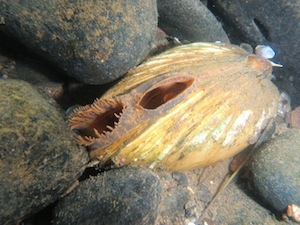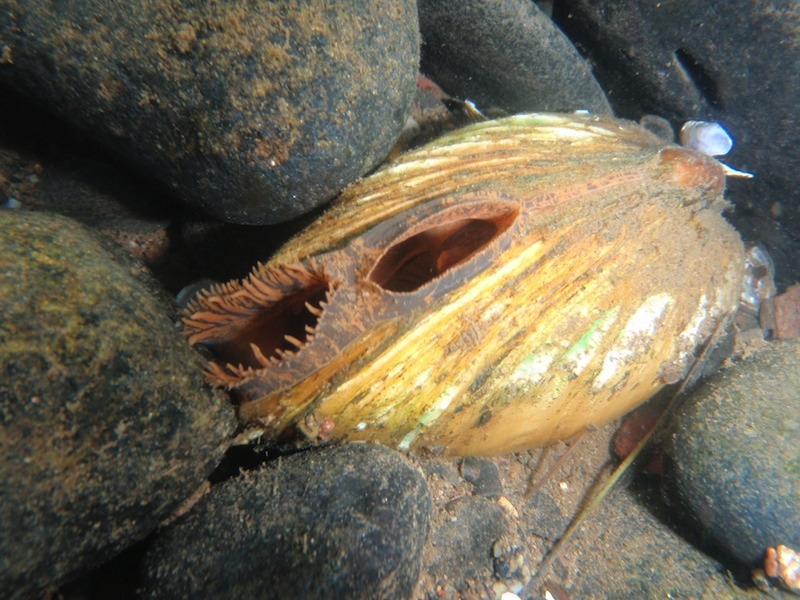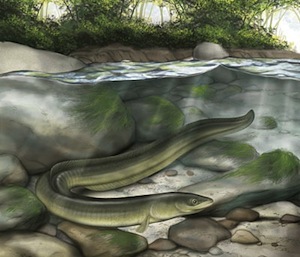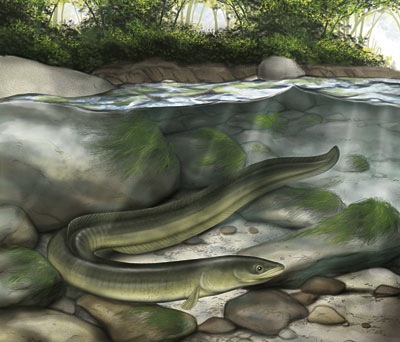Freshwater Mussels in the Susquehanna River
by SEAN P. REESE, Aquatic Ecologist, Bucknell Environmental Center
by SEAN P. REESE, Aquatic Ecologist, Bucknell Environmental Center
Freshwater mussels (Unionidae) are one of the most endangered taxonomic groups in the United States. Approximately 12 species of unionids have been documented as residing in the Susquehanna River.
Elliptio complanata was once the dominant species of mussel in the Susquehanna drainage but in recent years has been shown to have a declining population. Based on size distribution by species, we found the eastern elliptio (Elliptio complanata) is suffering from a loss of recruitment. One major factor behind this lack of young E. complanata may be the loss of the American eel from the upper Susquehanna River basin due to damming. Unionid freshwater mussels have a unique interaction with fish. Many use fish as a host for their glochidia or in their larval stage. Some mussel species are functionally dependant on a specific host fish to complete its life cycle. Mussels without the specific host fish interaction face complications with reproduction and a diminishing population and eventual extirpation or extinction. American eels are the primary host fish of larval (glochidia) E. complanata. While this species has been documented using a number of other host fish species (Kneeland and Rhymer 2008), our data suggests that this is limited in the West Branch of the Susquehanna River.
Elliptio complanata was once the dominant species of mussel in the Susquehanna drainage but in recent years has been shown to have a declining population. Based on size distribution by species, we found the eastern elliptio (Elliptio complanata) is suffering from a loss of recruitment. One major factor behind this lack of young E. complanata may be the loss of the American eel from the upper Susquehanna River basin due to damming. Unionid freshwater mussels have a unique interaction with fish. Many use fish as a host for their glochidia or in their larval stage. Some mussel species are functionally dependant on a specific host fish to complete its life cycle. Mussels without the specific host fish interaction face complications with reproduction and a diminishing population and eventual extirpation or extinction. American eels are the primary host fish of larval (glochidia) E. complanata. While this species has been documented using a number of other host fish species (Kneeland and Rhymer 2008), our data suggests that this is limited in the West Branch of the Susquehanna River.
Mussel Species and Abundance
Five species of mussels were found within the survey area, elktoe (Alasmidonta marginata), green floater (Lasmigona subviridis), yellow lampmussel (Lamsilis cariosa), eastern elliptio (Elliptio complanata) and creeper (Strophitus undulatus). 903 total mussels were found with an average CPUE of .77 mussels per m2 with the highest approximate density averaging 2.37 mussels per m2. The yellow lampmussel (Lampsilis cariosa) was the most dominant species averaging .59 mussels per m2 with a maximum of 1.93 mussels per m2.
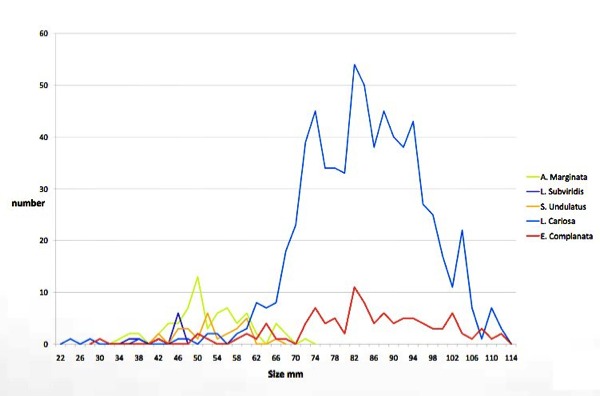
Figure 2. Relative abundance versus size of mussels in West Branch Susquehanna River near Milton, PA.
Mussels and Eel Populations
Buffalo Creek, Union County, PA
Buffalo Creek, Union County, PA
For the past two years an interdisciplinary study with the U.S. Fish and Wildlife Service and the USGS has been reintroducing the American eel into the Susquehanna watershed. Bucknell would like to continue to expand the study of the freshwater mussel populations in the Susquehanna and its main tributaries.
Surveys will be conducted at an established reintroduction site to assess the impact of the eels on the Unionid population, as well as establish baseline data on the diversity and distribution of the mussel community. We also plan to assess the distribution on young E. complanata throughout a set reach of stream, while identifying substrate and other physical parameters attributed to habitat.
Surveys will be conducted at an established reintroduction site to assess the impact of the eels on the Unionid population, as well as establish baseline data on the diversity and distribution of the mussel community. We also plan to assess the distribution on young E. complanata throughout a set reach of stream, while identifying substrate and other physical parameters attributed to habitat.
Figure 3. Freshwater eels play a crucial role in the health of freshwater mussel populations in the Susquehanna watershed. [Illustration by Andrew Recher]
Aquatic Community Assessments
West Branch Susquehanna River
West Branch Susquehanna River
In an effort to better understand the mussel populations in the Susquehanna River, a qualitative survey was performed roughly 1.4 mi downstream of the Milton State Park on the West Branch. A modified Allegheny River Mussel Protocol as described by Smith et al. (2001) was used for the survey.
Random timed searches were conducted in 25m x 25m (625m²) cells with an effective sampling fraction of ~.05. The effective sampling fraction is defined as the % of the cell that is searched thoroughly based on cell dimensions.
Snorkels were used to aid the survey in waters less than 1.5m in depth with SCUBA being used in depths greater than 1.5m. However, depths did not exceed 1.5m during the time of the survey. Searches were prorated in cells that were not square due to bank morphology.
Random timed searches were conducted in 25m x 25m (625m²) cells with an effective sampling fraction of ~.05. The effective sampling fraction is defined as the % of the cell that is searched thoroughly based on cell dimensions.
Snorkels were used to aid the survey in waters less than 1.5m in depth with SCUBA being used in depths greater than 1.5m. However, depths did not exceed 1.5m during the time of the survey. Searches were prorated in cells that were not square due to bank morphology.
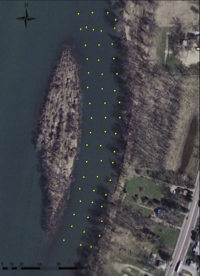
Figure 3. Habitat sampling grid on portion of West Branch Susquehanna River near Milton, PA; yellow dots indicate benthic habitat sampling locations.
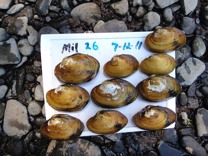
Figure 4. Cariosa mussels found in bed of the Susquehanna River.

